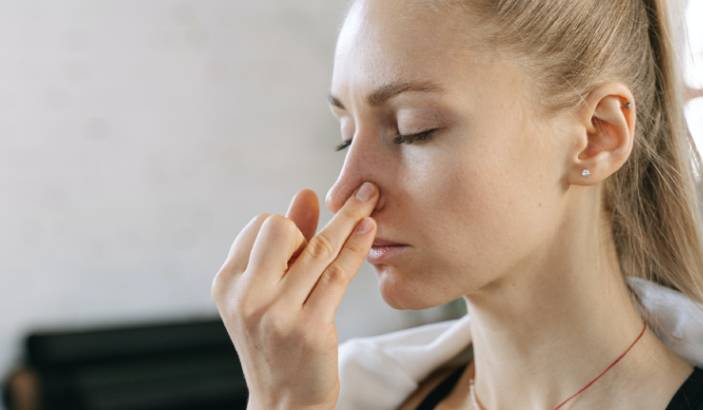Pranayama is an ancient Indian practice of controlling the breath, which has been used for thousands of years as a tool for physical, mental, and spiritual development. The word “pranayama” is derived from two Sanskrit words: “prana,” meaning life force or breath, and “ayama,” meaning control or restraint. Pranayama breathing techniques control and regulate the breath in various ways to produce specific physical and mental effects.
Breathing is an essential and automatic function of the body, but it can also be consciously controlled and regulated through pranayama. The advanced techniques of pranayama breathing can help to bring balance and harmony to mind and body and to improve overall health and well-being.
What are Low and High Prana?
Low-Prana breathing focuses on shallow, quick breaths, while High-Prana breathing encourages slow, deep breaths.
Low pranayama breathing is typically used in moments of rest and relaxation, while high-prana techniques are used to stimulate energy, power, and strength. Both types of breathing produce different effects on the body and mind, offering a range of benefits.
Benefits of Advanced Pranayama Breathing Techniques
The following are some of the most well-known and effective advanced pranayama techniques that can help you to achieve a deeper level of physical, mental, and spiritual well-being.
Nadi Shodhana (Alternate Nostril Breathing)
Nadi Shodhana is a powerful technique that balances the energy channels (nadis) in the body and brings peace to the mind. It is also known as alternate nostril breathing. To practice Nadi Shodhana, sit comfortably with a straight spine and close your eyes. Then, using the thumb of your right hand, gently close your right nostril and breathe in deeply through your left nostril. Then, close your left nostril with the ring finger of your right hand and release the right nostril to exhale. Repeat the same pattern, breathing in through the right nostril and out through the left for several rounds.
Kapalabhati (Skull Shining Breathing)
Kapalabhati is an invigorating and vibrant pranayama practice that detoxifies the respiratory system while concurrently stimulating your mind. This exercise entails rapid, powerful exhalations followed by passive inhalations for maximum effectiveness. To practice Kapalabhati, sit comfortably with a straight spine and close your eyes. Begin by deep inhaling, then exhaling quickly and forcefully, contracting the abdominal muscles to force the air out. The inhalation will occur naturally and passively between each exhale. Repeat this pattern for several rounds, gradually increasing the speed and force of your exhalations.
Ujjayi (Victorious Breath)
Ujjayi is a soothing and calming breathwork practice that helps bring serenity, ease stress, and lessen anxiety in the body and mind. This technique involves breathing in and out through the nose while constricting the throat to produce a soft, ocean-like sound. To practice Ujjayi, sit comfortably with a straight spine and close your eyes. Begin by inhaling deeply through the nose, then exhaling slowly and smoothly through the nose while constricting the back of the throat to create a soft, ocean-like sound. Repeat this pattern for several rounds, focusing on the sound and sensation of your breath.
Bhastrika (Bellows Breath)
The Bhastrika pranayama technique is an energizing and invigorating practice that has been proven to boost energy levels while enhancing respiratory function. This technique involves rapid and forceful breathing in and out through the nose. To practice Bhastrika, sit comfortably with a straight spine and close your eyes. Begin by inhaling deeply, then exhaling quickly and forcefully through the nose. Repeat this pattern for several rounds, gradually increasing the speed and force of your breaths.
Sitali (Cooling Breath)
Sitali is a refreshing and tranquil pranayama practice that can assist in decreasing stress levels, boosting respiratory health, and balancing body temperature – providing an overall sense of ease and relaxation. This technique involves inhaling through the mouth while curling the tongue into a tube shape. To practice Sitali, sit comfortably with a straight spine and close your eyes. Begin by curling the sides of your tongue to form a tube shape, then inhale deeply through the mouth. Exhale slowly and smoothly through the nose. Repeat this pattern for several rounds, focusing on the cool sensation of your breath as you inhale.
Bhramari (Humming Bee Breath)
Bhramari pranayama is a proven stress-buster that can help you gain better focus, relax your mind and body, and alleviate anger. Practicing this calming technique regularly will result in long-term mental and emotional well-being. This technique involves making a humming sound with each inhale and exhale. To practice Bhramari, sit comfortably with a straight spine and close your eyes. Begin by inhaling deeply through the nose while making a soft humming sound. Then exhale slowly and smoothly through the nose while continuing to make the same humming sound. Repeat this pattern for several rounds, focusing on the sound of your breath as you inhale and exhale.
Sheetali (Sipping Breath)
Sheetali is a calming pranayama breathing technique that not only helps to reduce stress but also boosts focus and regulates one’s body temperature. This technique involves breathing in through the mouth while curling the tongue into a tube shape. To practice Sheetali, sit comfortably with a straight spine and close your eyes. Begin by curling the sides of your tongue to form a tube shape, then inhale deeply through the mouth. Exhale slowly and smoothly through the nose. Repeat this pattern for several rounds, focusing on the cool sensation of your breath as you inhale.
Mistakes to Avoid When Practicing Pranayama
When practicing pranayama, it is important to be mindful of your breathing and body. Here are some tips for avoiding common mistakes when practicing pranayama:
- Do not force your breath or push yourself beyond what feels comfortable.
- Do not practice on a full stomach. Wait at least two hours after eating before starting your practice.
- Take breaks if you start to feel dizzy or lightheaded.
- If you experience any pain while practicing, discontinue the practice immediately and speak with your doctor.
- Avoid holding your breath for extended periods of time unless specifically instructed by an experienced yoga teacher.
By following these tips, you can ensure that you are safely and effectively practicing pranayama. With practice, you will be able to reap the many physical and mental benefits of this powerful breathing technique. Remember to stay comfortable, stay mindful and enjoy your practice.








